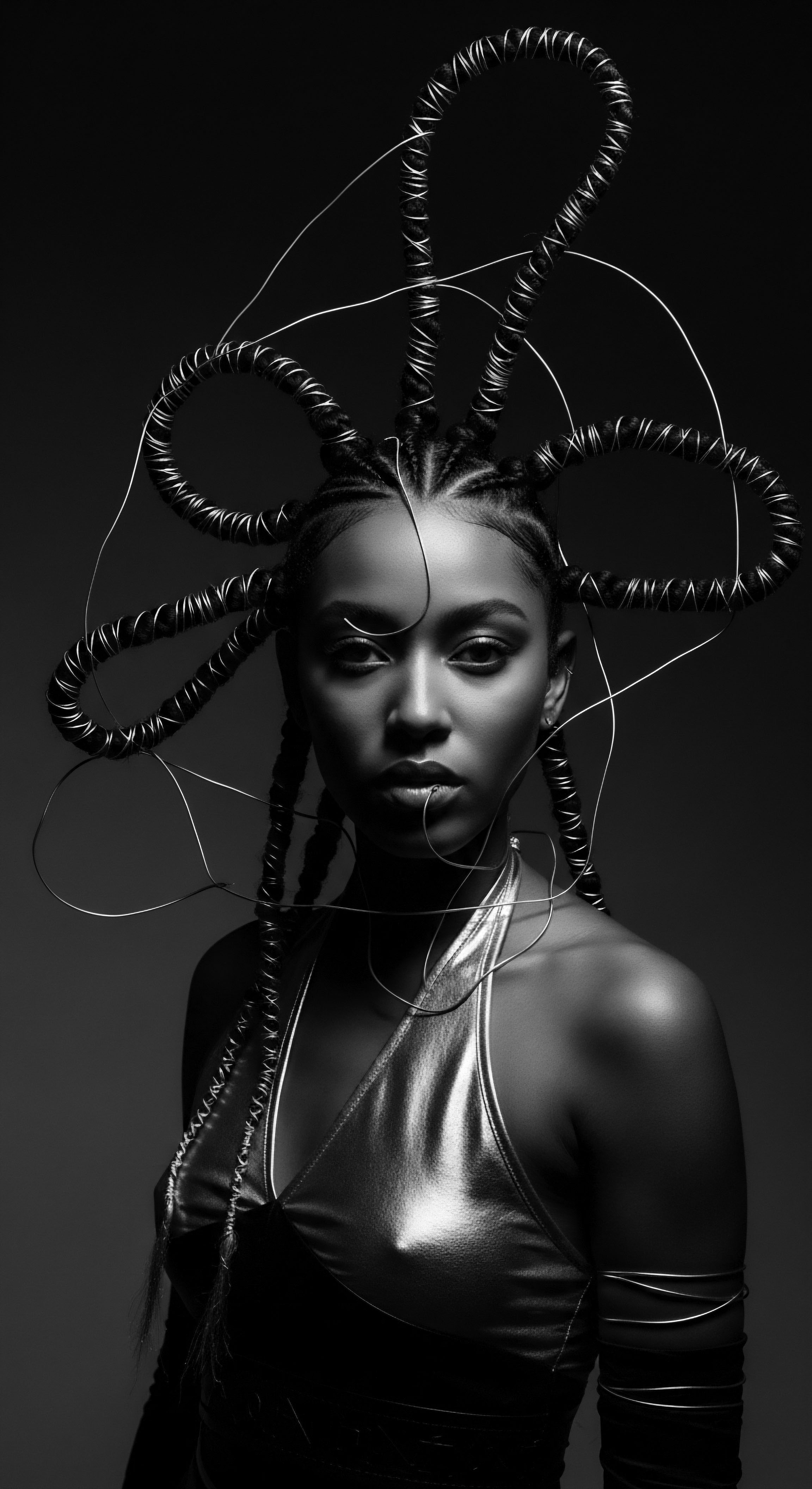
Fundamentals
The concept of Nubian Culture, particularly when viewed through the lens of hair heritage, presents a remarkable journey from the ancient banks of the Nile to contemporary expressions of identity. Its meaning extends beyond a mere geographical or historical designation; it represents a profound and enduring legacy of practices, values, and an aesthetic deeply intertwined with the textured hair of its people. This understanding is foundational for anyone seeking to connect with the deep roots of Black and mixed-race hair traditions. To grasp the Nubian cultural identity fully, one considers not only its origins but also its evolution, observing how it shapes the present.
At its core, Nubian Culture encapsulates the collective customs, beliefs, and artistic expressions of the various groups who have inhabited the historical region of Nubia, an expanse stretching along the Nile River in what is now southern Egypt and northern Sudan. For centuries, this region flourished as a vibrant nexus of commerce, knowledge, and distinctive cultural production. The communities of Nubia cultivated a way of life intrinsically tied to their environment, their spiritual convictions, and their social structures. This cultural framework provided the scaffolding for all aspects of daily living, including the meticulous care and significant styling of hair.
Nubian Culture is a living archive, where every strand of hair holds a story of resilience, identity, and ancestral wisdom.
Hair, in particular, served as a powerful signifier within Nubian societies. Beyond simple adornment, it communicated social standing, age, marital status, and even spiritual affiliations. The practices surrounding hair were not isolated acts; they were communal rituals, often involving specific tools, natural ingredients, and designs passed down through generations. These traditions speak to a deep understanding of hair as a living extension of self, a conduit to the past, and a declaration of belonging.
The significance of textured hair in Nubian culture also influenced neighboring civilizations. For instance, Egyptian pharaohs and elites, including Queen Nefertiti, adopted styles that mimicked the short, curly hair characteristic of Nubian people, demonstrating the aesthetic and cultural impact Nubia held.
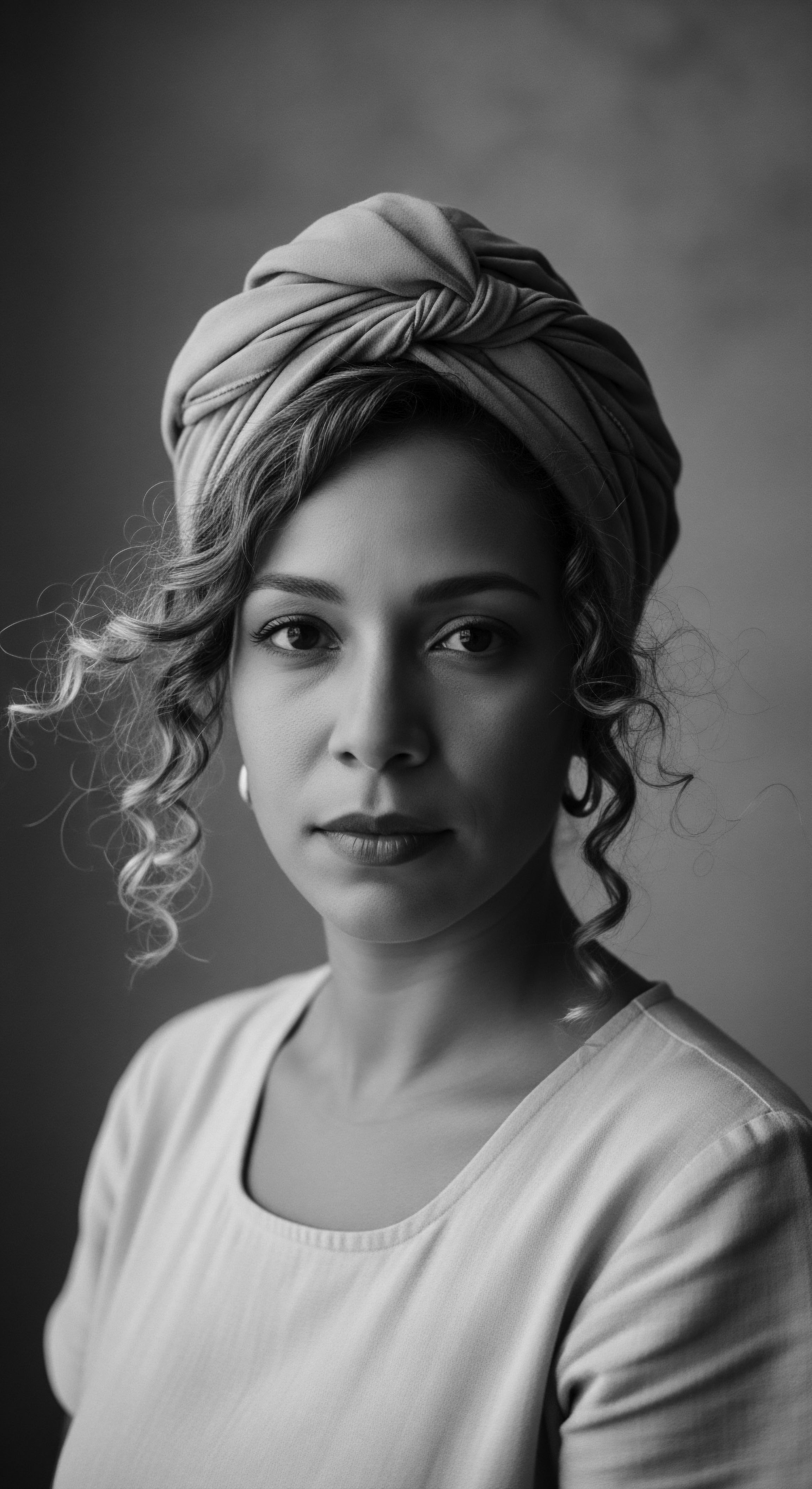
Early Roots ❉ Echoes from the Source
The earliest documented expressions of Nubian hair practices emerge from archaeological findings, revealing a sophisticated approach to care that predates many common historical narratives. These discoveries suggest that from the very earliest periods, hair was treated with an intentionality reflecting its esteemed position within society. The raw materials used for hair care were sourced directly from the fertile Nile Valley and its surrounding lands, grounding these practices in the immediate environment.
- Indigenous Ingredients ❉ Ancient Nubian communities utilized plant-derived oils, clays, and naturally occurring pigments for cleansing, conditioning, and coloring their hair. Ethnobotanical surveys of contemporary Nubian and southeastern tribes of Egypt identify the historical and ongoing use of plants such as Acacia nilotica and Lawsonia inermis (henna) in traditional hair and skin treatments, suggesting a continuous lineage of natural care.
- Styling Tools ❉ Evidence of combs, pins, and adornments crafted from bone, wood, and other natural materials highlight the artisanal skill involved in creating and maintaining complex hairstyles. These tools were not simply utilitarian; they often carried symbolic meaning.
- Symbolic Adornment ❉ Hair was frequently embellished with beads, shells, and sometimes even gold, each addition carrying specific social or spiritual messages. These adornments signaled status, readiness for marriage, or connection to community rites.

The Tender Thread of Care ❉ Ancient Practices
The approach to hair in ancient Nubian culture exemplifies a holistic perspective, where physical care intertwined with spiritual and communal well-being. This was not a superficial engagement with appearance; instead, it was a deeply ingrained aspect of personhood. The methods employed reflect an intuitive knowledge of textured hair’s specific needs, recognizing its unique structure and potential.
| Practice Hair Oiling |
| Traditional Application Used indigenous plant oils (e.g. from acacia) to moisturize, add sheen, and protect hair from the harsh desert environment. This also served ceremonial purposes. |
| Practice Braiding & Coiling |
| Traditional Application Intricate braided and coiled styles, such as tight, coiled braids, were prevalent, showcasing a deep understanding of hair manipulation for both aesthetic and protective reasons. |
| Practice Natural Dyes |
| Traditional Application Henna was used for coloring hair, often creating shades of red or blonde, while also providing conditioning benefits and reflecting cultural aesthetics. |
| Practice These practices, rooted in ancestral knowledge, highlight the intentionality and deep respect for hair within Nubian culture, a legacy still resonant today. |
The careful preparation of the hair, involving processes like cleansing with natural lathers and application of emollients, speaks to a routine of maintenance that ensured health and vitality. This echoes the sentiment within many Black and mixed-race hair traditions today, where routine care is seen as an act of self-reverence and a continuation of ancestral practices. The meaning of these rituals extended to marking life stages, celebrating communal events, and communicating individual identity.

Intermediate
Moving beyond fundamental understandings, the Nubian Culture’s engagement with hair becomes a narrative of cultural resistance, adaptation, and profound spiritual continuity. The historical context reveals how hairstyles and hair care became vehicles for expressing distinct Nubian identities, even when facing external influences or periods of cultural exchange. This deeper exploration uncovers a sophisticated interplay between material practices and intangible cultural meanings. The significance of Nubian hair practices lies not only in their ancient origins but also in their enduring relevance, demonstrating how cultural forms adapt and persist across millennia.
The distinctiveness of Nubian hair aesthetics is well-documented, often contrasting with, yet influencing, neighboring cultures like ancient Egypt. While Egyptians often wore elaborate wigs made from various fibers, including human hair, and styled their natural hair in plaits and curls, Nubians were recognized for their preference for natural textures, styled in tight coils or braided rows. This stylistic divergence underscored unique cultural values, with Nubian hair practices emphasizing natural form. The act of tending to one’s hair became a quiet affirmation of heritage, a daily ritual that maintained not only personal appearance but also a connection to communal identity.
Hair care in Nubian traditions is a tender thread, weaving individual identity into the rich historical fabric of the community.
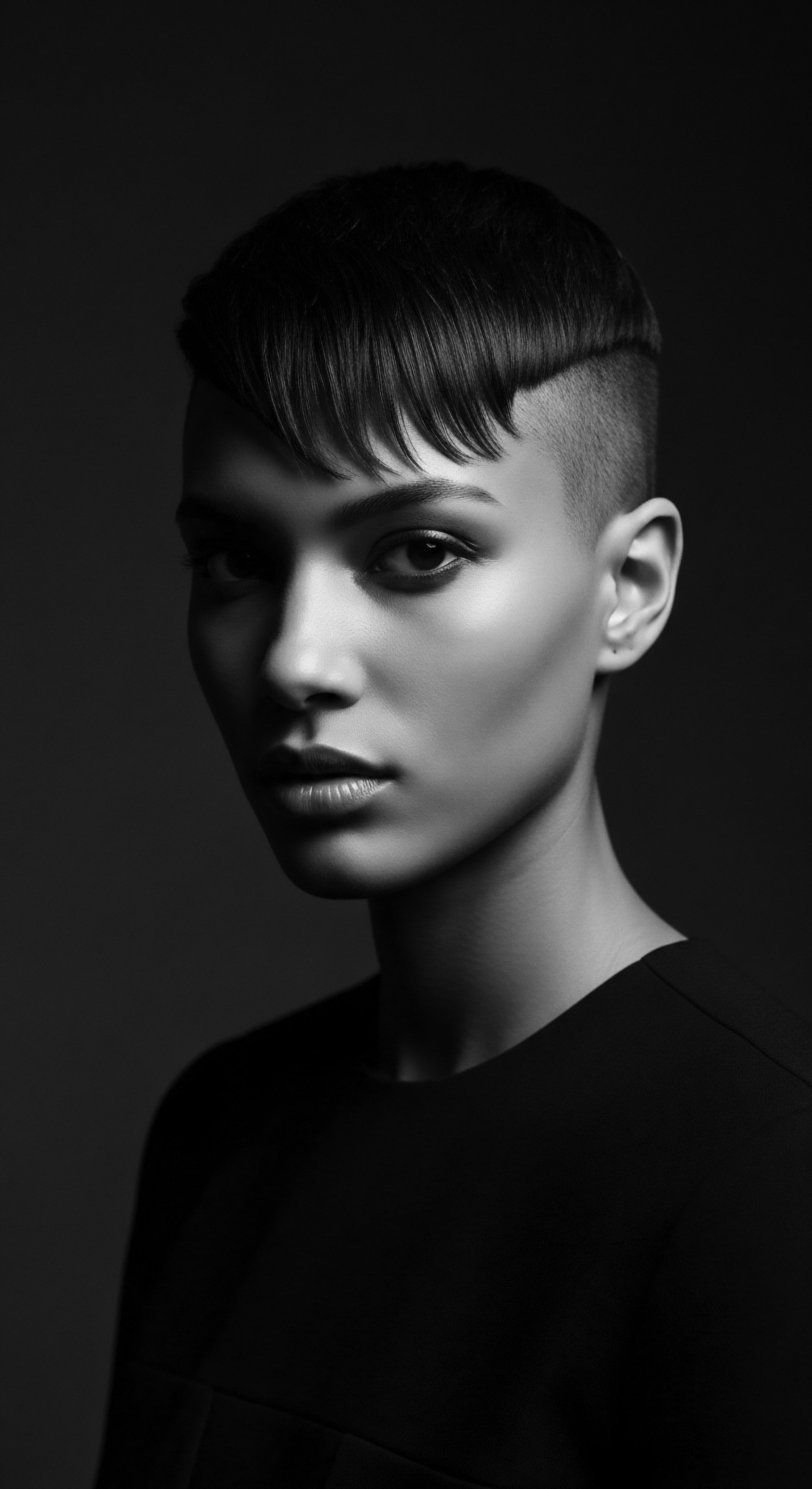
The Intertwined Narratives of Identity and Adornment
The hair traditions of the Nubian people were never static; they evolved in response to social dynamics, migrations, and interactions with other civilizations. Yet, a core consistency remained ❉ hair served as a powerful non-verbal language. For example, specific braided patterns or the inclusion of certain adornments could convey a woman’s marital status, her lineage, or her role within the community. These visual markers provided a form of societal shorthand, legible to all who shared in the cultural context.
The preservation of hair in ancient Nubian mummies offers a direct window into these historical practices. Studies involving these well-preserved remains provide biological evidence of hair types and care methods. For instance, the analysis of hair samples from 76 burials at Semna South in Sudanese Nubia, conducted by D.B. Hrdy in 1978, revealed that while some oxidation of the cuticle and keratin protein occurred, the overall structure remained well-preserved due to low humidity.
Intriguingly, hair form analysis showed curling variables intermediate between European and African samples, with a high ratio of maximum to minimum curvature, a measure of irregularity, approached only by Melanesian samples. This bioarchaeological evidence confirms the presence of diverse textured hair types within ancient Nubian populations, further validating the nuanced and adaptive nature of their hair practices.
- Cultural Diffusion and Adaptation ❉ The adoption of “Nubian wigs” by Egyptian elites during the New Kingdom, particularly during the Amarna period, exemplifies the cultural exchange between the two regions. These wigs were crafted to mimic the short, curly hair characteristic of Nubian tribes, signaling a fascination with Nubian aesthetics and perhaps a strategic appropriation of their perceived power. This demonstrates how Nubian hair styles, a distinctive cultural marker, transcended geographical boundaries.
- Hair as Social Signifier ❉ Beyond broad styles, specific detailing in Nubian hair, such as the number of braids or the placement of certain elements, could denote age, social hierarchy, or readiness for particular rites of passage. These codes were deeply understood within the community, making hair a public declaration of one’s place within the social order.
- Spiritual Resonance ❉ For many traditional African societies, hair is regarded as a sacred part of the body, a spiritual antenna connecting individuals to the divine and ancestral realms. This perspective was likely held within Nubian cultures, with hair care rituals being not merely acts of beautification but also expressions of reverence and spiritual alignment.

The Living Legacy ❉ Hair Wellness and Ancestral Wisdom
The traditional Nubian approach to hair care often aligns with what modern wellness advocates champion today ❉ a focus on natural ingredients, gentle handling, and holistic well-being. Ancestral knowledge passed down through generations prioritized the use of substances derived directly from nature. These included various oils, often infused with herbs, which provided nourishment, sealed in moisture, and offered protection from environmental stressors. The communal aspect of hair care, often involving women gathering to braid and tend to one another’s hair, fostered strong bonds and served as a vehicle for transmitting cultural knowledge.
This traditional wisdom finds resonance in contemporary discussions around natural hair care. The emphasis on moisturizing, protecting, and maintaining the integrity of textured strands through methods like twisting and braiding can be seen as a continuation of these ancient Nubian practices. The Nubian twist, a specific protective hairstyle, for example, utilizes hair extensions with a tight coiled pattern to mimic natural texture, offering a transitional option for those moving from chemically straightened hair back to their inherent curls. This connection underscores how historical practices continue to offer relevant solutions for modern hair health.
| Ancient Nubian Practice Use of natural plant oils (e.g. shea butter, acacia) |
| Modern Textured Hair Wellness Principle Emphasis on natural oils (jojoba, argan, shea) for moisture and scalp health. |
| Ancient Nubian Practice Protective braiding & coiling styles |
| Modern Textured Hair Wellness Principle Adoption of protective styles (twists, braids, locs) to minimize manipulation and damage. |
| Ancient Nubian Practice Communal hair rituals |
| Modern Textured Hair Wellness Principle Building community around shared hair care practices and knowledge exchange. |
| Ancient Nubian Practice The enduring principles of Nubian hair care illuminate a timeless wisdom for nurturing textured hair, bridging millennia with practical application. |
The ethical framing of hair practices, which Roothea champions, also finds its echoes here. Understanding the historical context of Nubian hair care invites consideration of how ingredients are sourced, the value placed on traditional knowledge versus purely commercial products, and the self-perception linked to one’s unique hair heritage. It prompts a dialogue about honoring lineage through conscious choices in hair care.

Academic
A scholarly examination of Nubian Culture, with a particular focus on its relationship with textured hair, demands a rigorous analysis that synthesizes bioarchaeological findings, ethnohistorical accounts, and the evolving semiotics of adornment. The meaning of “Nubian Culture” transcends a simplistic ethnographic description; instead, it becomes a complex construct shaped by historical contingencies, ecological adaptations, and profound assertions of identity in the face of dynamic geopolitical landscapes. This academic inquiry seeks to delineate the intricate mechanisms through which hair functioned not only as an aesthetic medium but as a biological record, a social contract, and a philosophical statement within Nubian societies.
The precise meaning of Nubian Culture, as it pertains to hair heritage, signifies a persistent and adaptable system of knowledge, practices, and material expressions centered on the distinctive biological and cultural characteristics of textured hair. This system served as a fundamental component of social cohesion, individual identity, and spiritual connection across millennia, demonstrably influencing and being influenced by surrounding civilizations while maintaining its core tenets of honoring natural hair forms. The investigation into this rich heritage necessitates drawing upon diverse research, including stable isotope analysis of mummified remains, which provides quantifiable data on ancient diets and, by extension, insights into the holistic health and practices that sustained hair vitality.
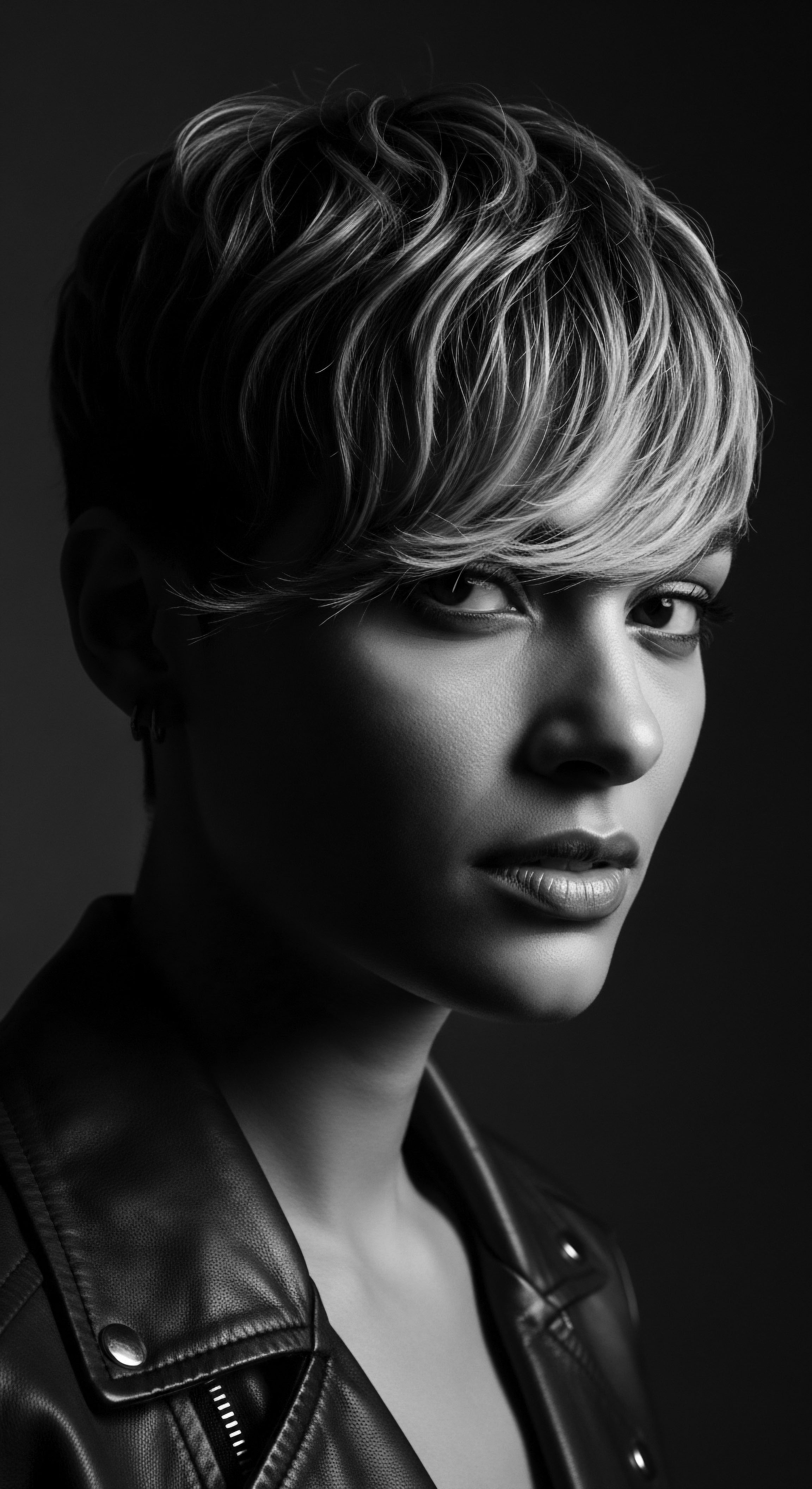
Echoes from the Source ❉ Bioarchaeology and Hair Morphology
The fundamental biology of textured hair, with its unique helical structure and propensity for coiling, finds a profound historical anchor in Nubian populations. Bioarchaeological studies of ancient Nubian remains have provided direct evidence of hair morphology and preservation. Investigations into human hair from naturally desiccated Nubian mummies, such as those from the X-Group (AD 350–550) and Christian (AD 550–1300) periods in the Wadi Halfa area, confirm the excellent preservation of hair structure, even after centuries. This preservation allows for analyses that go beyond mere visual observation, delving into the microscopic characteristics of the hair shaft.
Research on hair samples from Semna South (Sudanese Nubia) noted medium diameter and scale count, with curling variables falling intermediate between European and African samples, alongside a particularly high ratio of maximum to minimum curvature. This specific finding, approached only by Melanesian samples, indicates a unique and irregular curl pattern, providing a scientific basis for understanding the diverse textures present in ancient Nubia. Such detailed analyses affirm that the Nubian engagement with hair was a direct response to, and celebration of, these inherent biological qualities. The care regimens developed were thus not arbitrary but deeply attuned to the intrinsic needs of textured hair, promoting its health and manageability.
- Hair as a Bio-Indicator ❉ Stable isotope analysis, often conducted on hair samples from mummified individuals, offers insights into ancient Nubian diets. For example, studies suggest the Nubian diet was richer in C4 plants (like millet and sorghum) than the northern Nile Valley, with seasonal fluctuations reflecting agricultural practices. A diet rich in specific nutrients would directly influence hair health, underscoring the ancient understanding of internal wellness contributing to external vitality.
- Genetic Heritage and Hair Diversity ❉ The variations in hair morphology observed in archaeological samples align with the broad diversity within African textured hair. This underscores that “African hair” is not a monolith but encompasses a spectrum of curls, coils, and waves, each requiring specific modes of care. The Nubian response to this diversity was a sophisticated system of cultivation and adornment.
- Archaeological Materiality ❉ Beyond hair itself, the discovery of hair-related artifacts such as combs, adornments, and even hair-covered objects in Pan-Grave burials in Lower Nubia and Upper Egypt speaks volumes. One such artifact, a hair-covered object gathered with a cord from Cemetery Y in Hu, Egypt, studied using non-destructive digital light microscopy, highlights the deliberate incorporation of hair, both human and animal, into funerary and possibly daily items, confirming its cultural importance.

The Tender Thread ❉ Traditional Knowledge Systems and Hair Care
The application of scientific principles to understanding historical hair care reveals a remarkable alignment between ancient Nubian practices and modern trichological insights. The traditional Nubian approach to cleansing, moisturizing, and styling textured hair was empirically driven, developed through generations of lived experience and observation. This accumulated wisdom formed a cohesive traditional knowledge system. For instance, the use of natural substances for hair coloring, like henna, not only provided aesthetic appeal but also offered conditioning and strengthening properties, a fact supported by contemporary scientific understanding of its chemical interactions with keratin.
The ritualistic application of these botanical agents, often accompanied by communal gatherings and storytelling, transformed routine care into a social and spiritual event. This collective aspect reinforced cultural norms, transmitting detailed knowledge about specific plant properties and their optimal use. The “khamrah,” a traditional Nubian fragrance prepared for brides, incorporating sandalwood and other natural ingredients, offers a parallel to this holistic approach, extending beyond scent to a broader concept of bodily and spiritual readiness. The preparation of hair for ceremonies—whether for celebrations or as preparation for significant life events—was a celebrated tradition requiring years of specific treatment to cultivate desired styles.
The enduring nature of practices such as oiling, twisting, and braiding among Black and mixed-race communities globally can be seen as a direct descendant of such ancient African traditions, including those of Nubia. These methods provide vital protection for delicate textured strands, reducing breakage and promoting growth. The cultural significance of these practices has persisted through the Middle Passage and into the diaspora, serving as powerful symbols of continuity, resilience, and connection to ancestral roots despite attempts at cultural eradication.
Nubian hair care practices illustrate an enduring ingenuity, validating ancient wisdom through the lens of contemporary scientific understanding.
The connection between hair care and self-perception, particularly within communities grappling with historical oppression and imposed beauty standards, is deeply informed by this heritage. The Natural Hair Movement of recent decades represents a reclamation of these ancestral aesthetic and care practices, a deliberate choice to honor natural texture over Eurocentric ideals. This movement, with its emphasis on protective styles and natural products, aligns directly with the intrinsic values of Nubian hair culture.

The Unbound Helix ❉ Identity, Resistance, and Future Trajectories
The Nubian Culture’s relationship with hair provides a potent case study in the construction and maintenance of identity through material culture. Hair served as a visible and malleable canvas upon which individual and collective identities were inscribed. During periods of Egyptian colonial influence, for example, distinctive Nubian hairstyles, often depicted in contrast to Egyptian portrayals, became a silent form of cultural assertion.
While Egyptians depicted themselves with reddish-brown skin and black hair, and Nubians with black skin, broad flat noses, and short hair in ringlets, biological evidence reveals a more nuanced reality, demonstrating that distinguishing between Egyptian and Nubian populations biologically is complex. Despite these artistic distinctions, the Nubian emphasis on specific hair aesthetics persisted.
The idea that hair can be a symbol of rebellion and identity assertion has deep roots in African societies. In the context of ancient Nubia, the consistent portrayal of specific hairstyles in art and burial contexts underscores their function as markers of cultural belonging. This continuity of aesthetic preferences, even when exposed to dominant external influences, signals a deep-seated cultural reverence for their unique hair forms.
The modern expression of Nubian hair influence is seen in styles like Nubian Twists, which are recognized for their tightly coiled pattern that closely mimics natural African hair. This contemporary style is a testament to the enduring appeal and adaptability of Nubian aesthetic principles, offering a protective option that honors inherent hair texture. The global reach of these styles, adapted and reinterpreted across the African diaspora, transforms them into symbols of collective heritage and ongoing cultural pride.
- Diasporic Reclamation ❉ The journey of textured hair practices from ancient Nubia to modern Black communities worldwide highlights a profound diasporic reclamation of heritage. Traditional braiding techniques, once codes for communication among enslaved people, now stand as powerful statements of cultural pride and resilience.
- Hair as Historical Record ❉ The ability to analyze mummified hair for isotopic composition provides unique data, such as dietary shifts, over long historical periods. This approach, exemplified by studies of Nubian mummies from Wadi Halfa, suggests the balance of C3 and C4 plants in individuals’ diets fluctuated seasonally with agricultural practices, a stable pattern for over 1000 years. This demonstrates how hair serves as a biological record, providing insights beyond mere appearance.
- Ongoing Scholarly Inquiry ❉ Current bioarchaeological research, such as the British Museum–Glasgow University conservation project on medieval Nubian textiles which identified human hair as a fiber, continues to illuminate the historical significance of hair in daily life and funerary rituals. These studies broaden our understanding of the practical and symbolic utility of hair in past societies.
The long-term consequences of this cultural legacy are manifold. For individuals of African descent, reconnecting with Nubian hair traditions can serve as a potent act of self-affirmation, fostering a deeper sense of self-worth rooted in ancestral identity. For the broader cultural landscape, it challenges monolithic beauty standards, advocating for a more inclusive and historically informed appreciation of textured hair. The continuing academic and community-led exploration of Nubian Culture, particularly its hair heritage, thus functions as a living inquiry, perpetually enriching our understanding of human diversity and resilience.
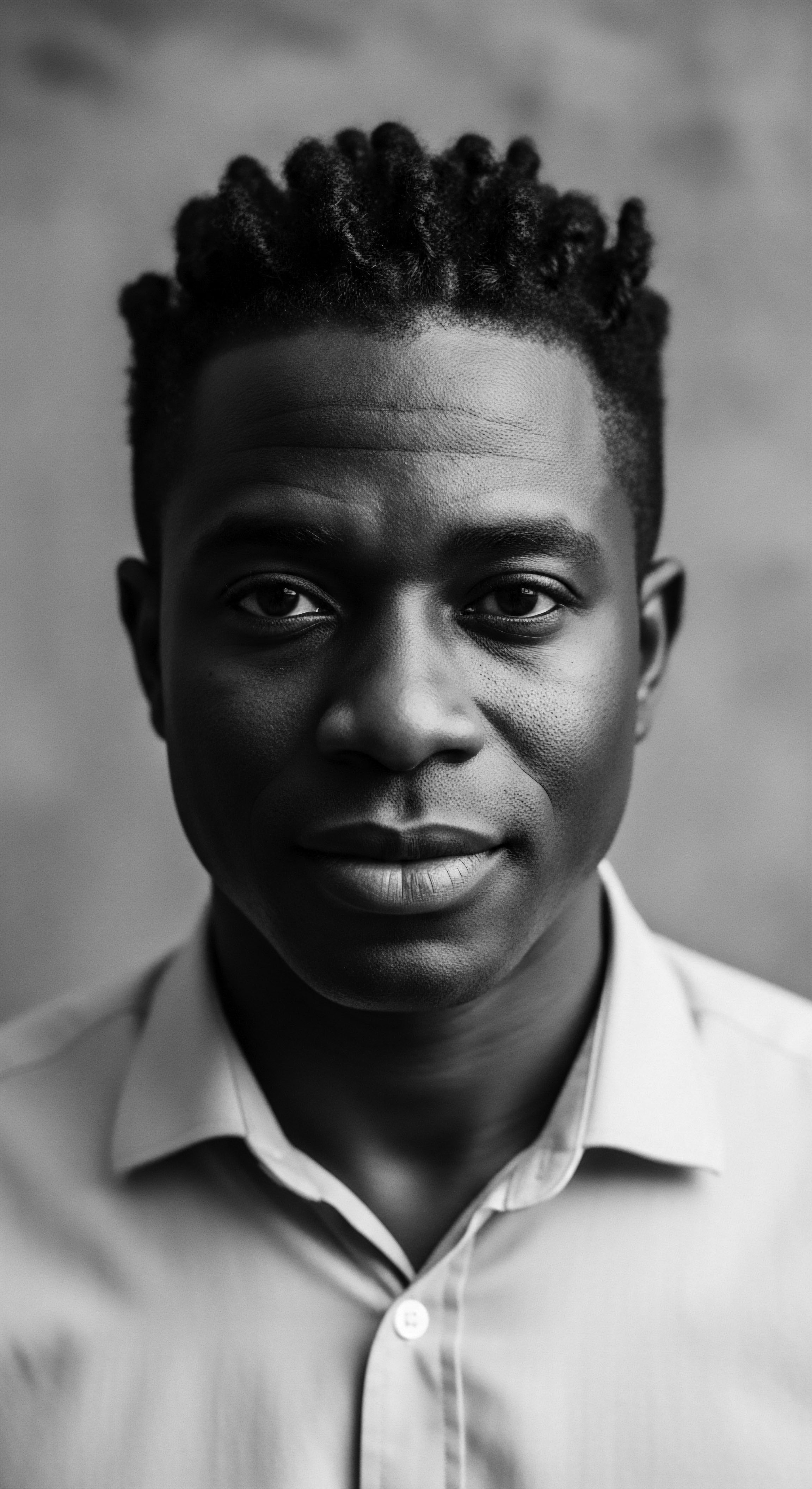
Reflection on the Heritage of Nubian Culture
To contemplate the Nubian Culture in its vastness, particularly its deep connection to hair, is to embark upon a contemplative journey through time, a meditation on the enduring spirit of a people. This exploration unveils a heritage that is not merely static history, but a dynamic, living archive. It reminds us that hair, in all its varied forms and textures, carries stories—stories of survival, of identity asserted, and of beauty defined on one’s own terms. The careful hands that once coiled and braided strands along the ancient Nile laid the groundwork for a profound understanding of textured hair’s capabilities and its sacred place within self and community.
This journey reveals that Nubian aesthetic practices were never separate from a holistic sense of well-being, where external adornment reflected internal harmony. The meticulous care, the intentional selection of natural elements, and the communal rituals associated with hair were acts of devotion—to self, to family, and to lineage. It speaks to a wisdom that understood the body as a sacred vessel, with hair serving as a vibrant extension of one’s very being. This ancestral perspective offers a gentle invitation for contemporary practices to reclaim this reverence, moving beyond superficial trends to a deeper, more meaningful engagement with one’s own hair heritage.
The legacy of Nubian Culture, articulated through its hair traditions, whispers lessons of resilience across generations. It testifies to the power of cultural forms to persist, to adapt, and to carry forward narratives of identity even in the face of immense historical change. For every textured strand, for every coiled pattern, for every carefully applied balm, there is an echo of Nubian hands, of Nubian wisdom, and of an unbroken chain of heritage that stretches back to the dawn of civilization. This ongoing story, woven into the very structure of our hair, continues to inspire and to ground us in a profound appreciation for the beauty and strength of our ancestral past.

References
- Adams, W. Y. (2011). Qasr Ibrim ❉ The Archaeology of a Frontier Post. Cambridge University Press.
- Adams, W. Y. & Adams, E. W. (1998). Kulubnarti II ❉ The Artifacts. British Archaeological Reports.
- Adams, W. Y. et al. (1999). Kulubnarti I ❉ The Cemeteries. British Archaeological Reports.
- Aufderheide, A. C. (2003). The Scientific Study of Mummies. Cambridge University Press.
- Buzon, M. R. (2009). A Bioarchaeological Perspective on Egyptian Colonialism in Nubia during the New Kingdom. Journal of Egyptian Archaeology, 94, 165-181.
- Hrdy, D. B. (1978). Analysis of hair samples of mummies from Semma South (Sudanese Nubia). American Journal of Physical Anthropology, 49(2), 277–282.
- Iacumin, P. et al. (1996). Diet and Climate in the Nile Valley During the Predynastic to Roman Periods ❉ A Stable Isotope Study. Journal of Human Evolution, 30(2), 159-170.
- Schwarcz, H. P. & White, C. D. (2004). Radiocarbon Dating and Stable Isotope Analysis of Collagen and Hair from Mummies of the Early Christian Period in Nubia. Journal of Archaeological Science, 31(2), 221-228.
- Sharaibi, O. J. et al. (2024). Cosmetic Ethnobotany Used by Tribal Women in Epe Communities of Lagos State, Nigeria. Journal of Complementary Medicine & Alternative Healthcare, 12(4), 555845.
- White, C. D. (1993). The grasshopper or the ant? ❉ Cultigen-use strategies in ancient Nubia from C-13 analyses of human hair. Journal of Archaeological Science, 20(6), 657-668.
- White, C. D. & Schwarcz, H. P. (1994). Temporal and spatial variation in the diet of ancient Nubians ❉ evidence from stable isotopes. American Journal of Physical Anthropology, 94(1), 1-13.
